elgatosuizo
Member
This summer I completed my self-designed RA-4 film processor, and that was the ignition point for an older idea:
to build a small, semi-automatic rotary film processor in the spirit of the classic Jobo CPE/CPP series —
but 3D-printed, stepper-driven, and compact enough to fit in half a Eurobox (30 × 40 cm).
Originally, I discovered a nice build on Printables by @Franktion_442763 and thought I’d start from there.
But the STL files were difficult to modify (and used a DC motor, while I prefer steppers).
So I decided to redraw the entire design, and one idea led to another —
a motorized lift, automatic rinse control with a small pump, and a smart controller to orchestrate the process.
Eventually, I had moved completely away from the original model — except for the Eurobox footprint.
So, full credits to Franktion_442763 (and others who inspired DIY Jobo-style builds).
I moved to an Arduino Mega 2560 Pro for control and a Nano dedicated to the steppers, linked via serial.
The flowmeter proved unreliable due to noise, so I now calculate volumes by calibrated pump time — works great.
Each component is isolated and filtered for reliability, and the firmware supports 7 process profiles with up to 12 steps each.
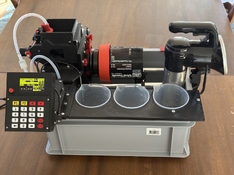
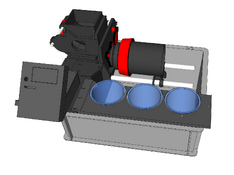
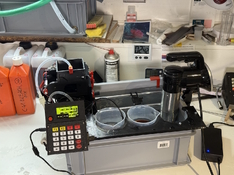
However, I’ve noticed a few small details to refine:
honestly beyond my expectations — and in terms of workflow and warm-up handling,
it’s surprisingly close to a real Jobo CPP.
Here some more Details on the mechanics:
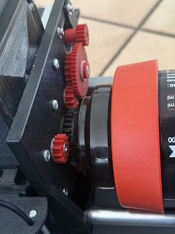
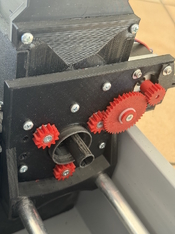
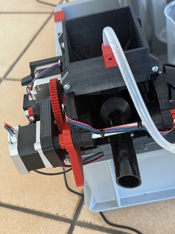
I also recorded a demo video, which I’ll post soon.
to build a small, semi-automatic rotary film processor in the spirit of the classic Jobo CPE/CPP series —
but 3D-printed, stepper-driven, and compact enough to fit in half a Eurobox (30 × 40 cm).
Originally, I discovered a nice build on Printables by @Franktion_442763 and thought I’d start from there.
But the STL files were difficult to modify (and used a DC motor, while I prefer steppers).
So I decided to redraw the entire design, and one idea led to another —
a motorized lift, automatic rinse control with a small pump, and a smart controller to orchestrate the process.
Eventually, I had moved completely away from the original model — except for the Eurobox footprint.
So, full credits to Franktion_442763 (and others who inspired DIY Jobo-style builds).
Design goals
- Semi-automatic operation: automatic rotation, chemical dumping, and water rinse.
(I skipped full automation with chemical pumps — too much cleaning afterward!) - Compatibility: supports C-41, E-6, and B/W workflows.
- Heating: done via Sous-Vide immersion heaters, a proven and simple solution.
- Mechanics:
- Stepper-driven drum rotation with three small gears centering the Jobo tank gear.
- Stepper-driven lift with reduction gearing for torque.
- Two-liter integrated rinse-water tank under the mechanism, thermally coupled to the main bath.
- Three temperature sensors: one in the water bath, one in the rinse tank, and one handheld probe for chemicals.
Electronics
After some early struggles (ESP32 was unstable with steppers + keypad),I moved to an Arduino Mega 2560 Pro for control and a Nano dedicated to the steppers, linked via serial.
The flowmeter proved unreliable due to noise, so I now calculate volumes by calibrated pump time — works great.
Each component is isolated and filtered for reliability, and the firmware supports 7 process profiles with up to 12 steps each.



First test results
The first full development cycles have run almost perfectly.However, I’ve noticed a few small details to refine:
- The wide-mouth beakers I used aren’t ideal for temperature control.
I’ve already drawn and 3D-printed three custom lids to improve chemical pre-heating in the water bath. - The drain outlet drips slightly, so that needs a small redesign.
- The mantle bath can’t heat cold rinse water efficiently,
but if you fill it already at the correct temperature, everything stays perfectly stable. - To pre-warm developer and blix, I simply place their closed bottles in the water bath before pouring into the beakers.
honestly beyond my expectations — and in terms of workflow and warm-up handling,
it’s surprisingly close to a real Jobo CPP.
Here some more Details on the mechanics:



I also recorded a demo video, which I’ll post soon.










